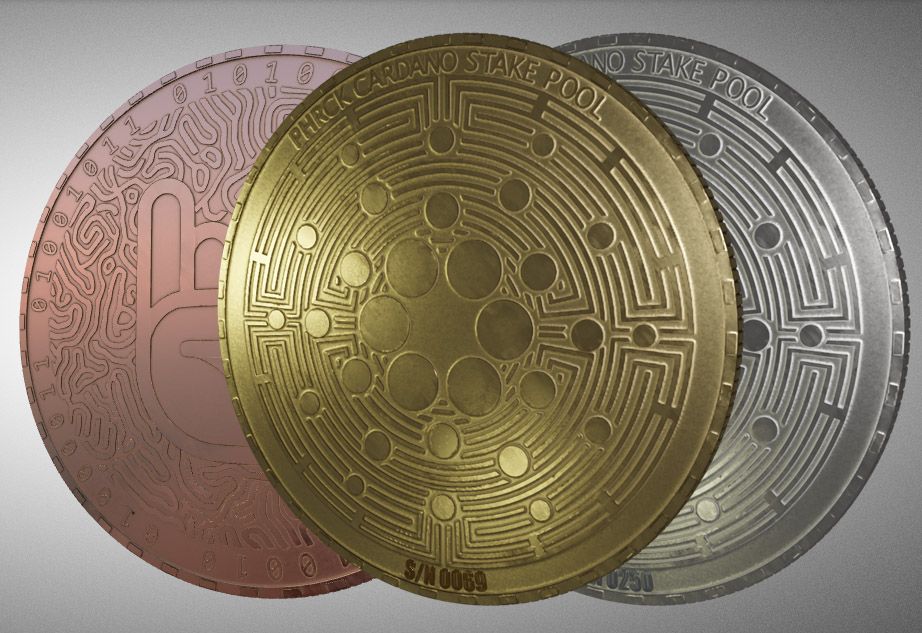
What’s up with this “pooling” and “staking” thing? What are these things about? …and why do we do them?
There are 2 dominant consensus mechanisms implemented in blockchain networks – the “Proof-of-Work” and the “Proof-of-Stake“. There are more, of course. But in this post, we’ll talk about these two only. What the “consensus mechanism” is about – is also outside the scope of this article. We’ll discuss that in another article perhaps.
So, in blockchain networks, the network participants are rewarded for producing the next blocks in the chain. This is their incentive for contributing to the maintenance and upkeep of the network.
In networks using the old Proof-of-Work consensus mechanism, you can participate in producing the next blocks by simply “mining”, or doing mathematical computations in your computer until you find the correct solution that’s required for producing the next block. You don’t need to hold the network’s coins, you can proceed straight to calculating (this is the “work” in Proof-of-Work). If you get lucky and you find the solution ahead of everyone else in the network, you get to produce the next block and receive the rewards.
In networks using the Proof-of-Stake consensus mechanism, you only need to hold the network’s coins before you can participate in producing new blocks and therefore, earning the rewards. You don’t need to do any calculating work.
In the Cardano blockchain network, just holding your coins doesn’t automatically mean you’re already staking and therefore entitled to receive rewards. You first need to register in the network your participation in this block production activity. You do that with your wallet which contains your ADA balance (the network’s coin).
This is what we call “staking”. You basically just keep your coins in your wallet which you then register in the network as either a stake pool, or a delegator to a stake pool.
So here in Cardano, you really have 2 ways to “stake” your coins and earn rewards for doing so:
- Operate your own “block-producing” node (aka “stake pool”); or
- Delegate your stake into an existing block-producing node (this is the “pooling” that we are talking about)
Why do we pool?
Because, math and algorithms! 😅
But in plain English, if you run your own block-producing node, you only get a chance to produce the next block(s) if your node’s stake is high enough that the network will consider you worthy of being given the trust to produce the next block.
If your node holds only a small of amount of the network’s coins “at stake”, that means you don’t have a lot of (or enough) interest in the network for you to be trusted by everyone else to “write” the next “page” in the “history of the network”, if you will.
Because that’s just what the next block is – a new page in the history of the blockchain network.
Aside from a considerable amount needed to be put at stake, running your own block-producing node also entails expenses. And if you want to be sure you are doing it right, it can cost “a lot” of money. Not to mention your time and effort in maintaining your servers and keeping them running safely and securely, 24/7.
This is why there is this option for holders of the network’s coins to pool together their “stake” into a “stake pool”. So that together, their pool will have clout in the network – enough clout to be elected by the network to produce the next blocks.
Pooling together our “stake”, gives our pool higher chances of producing the next blocks. That’s mainly how it is – the bigger the node’s stake, the more chances it has (up to a certain limit, of course) of being selected by the network to produce the next blocks. And producing the next block means getting the reward for doing so.
For the delegator, this means:
- Extra income without doing anything more than clicking the “delegate” button in their wallet. And at the same time…
- You are helping secure the network through supporting one full node that is incentivized to maintain a copy of the full history of the network.
For the pool operator, this means they get incentivized to continue running their full node which is one more place where the blockchain network lives.
And for both the delegator and the operator, this means longevity and security of the network. Because the more nodes there are that maintain a complete copy of the blockchain, the harder it is to destroy or attack that network.
This allows the spread and adoption of the network’s use and utility. And the more the network proves to be useful, the higher the value of its coins become. So, if we just continue holding our coins long enough, we will be holding very, very valuable coins!
It all starts with pooling together our coins into a stake pool.
What are the risks in staking?
Since we are talking about putting our coins “at stake”, this necessarily implies there’s some risk involved, right?
Well, there is. Simply holding your coin means you are not using its value, you are not using it to pay for things, or exchanging it to fiat or other cryptocurrencies. You are just keeping it, hodling it. If it loses value over time, that’s a loss for you.
The good thing here in Cardano is, that’s where the risks stop. In other PoS networks, their stake gets slashed as penalty if the block-producing node doesn’t do its job when called. Like for example, when it’s offline for maintenance or whatever reason at the time it was assigned to produce the next block. Here in Cardano, there’s no slashing.
Another thing is that you are free to spend your ADA coins anytime even while your wallet is staked. At every end of an epoch (a period of 5 days in Cardano terminology), a snapshot is taken of the balances in staked wallets. And only the remaining balances are entitled to their proportionate share of the rewards for that epoch. If you used up your entire balance, you don’t get a share of the rewards. If you used only a portion of your balance, you get a share of the rewards only in proportion to your remaining balance at the time of the snapshot.
Start staking now!
Got ADA? If you plan on holding it for a while, you might as well stake it and get your share of those sweet rewards! What are you waiting for?
As you see from the above, there’s really no additional risks involved in staking apart from the risk that already comes with just holding any kind of currency, whether fiat or crypto. Stake with us now by following any of the guides found on the following page:
To delegate to our stake pool, use the following details:
Ticker Code
PHRCK
Pool ID
0cc4e441026e975f1cf048fcd3489c86424014dd34c244e268cb8095



